Charcuterie is on the menu of just about any hip restaurant or winery. It’s trendy yet timeless. Who doesn’t love to graze from a tray of delicious meat treats? With the holidays upon us, chances are you’re attending (or hosting) a get-together and need a dish to pass. I’m here to give you some tips to build the perfect charcuterie board for parties or even for a weeknight dinner the whole family will gobble up.
By definition, charcuterie is art. Specifically, the art of arranging cured meats. But, it’s really so much more: selecting meats, choosing accompaniments, and putting together a presentation– that’s all art. Art is free-flowing, art is fun, art does not abide by any set of rules. When you let go of what you think the rules are and realize you can make your own…that’s when you’ll become a true charcuterie artist.
The Art of Selection
You can put almost anything onto a platter and call it charcuterie. Purists may cry foul if you don’t use cured meats, but for the rest of us, the meaning is evolving. A grilled bratwurst, sliced on the bias, and served alongside a cup of mustard? Do it. A ribeye steak cut into bite-sized pieces next to a hunk of smoked cheddar and horseradish aioli? Yes, please. A pile of pepperoni in one corner because that’s the only meat my five-year-old likes? Kid’s gotta eat.
It’s about getting a variety of bite-sized things onto a tray with other bite-sized things that all loosely complement each other. Main features should pair with at least two other items. For instance, the sopressata is mellowed by the smoked mozzarella but comes to life on a peppercorn cracker with a dollop of pesto. The Cotswold and the venison sausage are a match made in heaven, but slide that Cotswold into your mouth next to a Castelvetrano olive and scandal ensues.
Meats
Meat is likely what you will build the tray around, and there are a lot of ways you can go. Choose a theme such as all Italian meats, all pork options, or, heck, take that grilling theme mentioned above and add in a smoked chicken breast. You can also choose contrasting items, which is often where I end up. Two to three meats is typically good, but this is where your creative rule comes into play. Loosely plan on two ounces of meat per person and don’t hesitate to include a kid-friendly selection– you may be surprised at how many adults go after it.
Cheeses
Sometimes I select cheeses first and then meats. Like I said: rules, schmules. Asking your cheesemonger’s suggested pairings is one of the best ways to learn new flavors. Here, you can also choose to have a theme, such as an array of aged cheddars (a favorite with my kids) or several French cheeses. A contrasting tray may have a soft option, like goat cheese; a sharp, aged option; and a milder option. A stinky, strong bleu or mango Stilton are not to be forgotten and can be fun to pair. Again, loosely plan on two ounces of cheese per person.
Tinned & Smoked Fish
Tinned fish is often overlooked or gets a bad rap because people perceive it as “the non-flying bird of the large body of water” canned fish. No, no, no. This is not that. Find this one in specialty stores (typically an oval tin with a peel back lid). You’ll find delicious, quality fish like line-caught white tuna or mackerel, which pair well with brined items like capers, cornichons, or olives. Trust me, once you go tinned fish, you’ll come back to it again and again. And we all know Michigan is a mecca for smoked fish. Bring it on!
Pickles & Olives
A true cucumber pickle (like Detroit’s own McClure’s) works on any number of platters and is always a crowd pleaser, especially for the littles. Think outside the box on this, too. A unique pickle like a brussels sprout or a clove of pickled garlic can add interest, and a quick-pickled red onion adds a bright pop of color. Hit that olive bar for a variety of options, as well. A couple types with different flavors will pair with multiple items on the board. For a larger board, one pickle and two olives usually works well. For a smaller board, they can be skipped or reduced based on your other items.
Fruits & Veggies
Every tray needs a bit of brightness to liven it up, and there’s nothing better than fresh, natural color. Not to mention, most items on a charcuterie board make you thirsty because they are full of salt. A fresh veggie helps cleanse your palate and moisten your tastebuds. Cherry tomatoes or sliced cucumbers answer the call while blanched asparagus is perfect for wrapping in cured meat. Grapes are like tiny little water balloons for your mouth, and berries pair well with cheese. Hit the farmers market for any in-season produce that strikes your fancy. Fruits and veggies add so much aesthetically that the options are wide open. Please feel free to let the kids make a selection or two.
Breads & Crackers
I’ll be honest: crackers are one of the least important parts of my tray. You put crackers next to cheese, people will eat them. But what if you don’t serve them? They will eat it anyway! A fine selection of cheeses should stand alone and not be overshadowed by a cracker. However, there are certainly a lot of crunchy carbs that work well with charcuterie. I love to see a nutty, seeded cracker as well as a basic butter cracker to please everyone (ahem, my kids). You can never go wrong with a great bread, either– sometimes my trays are built around the bread. Just be sure to have something other than meats and cheeses to go along with it like jam or dipping oil.
Nuts & Sweets
Nuts pair nicely with just about everything on the board. My absolute favorite are Marcona almonds (oily, salty little gems they are!). Any kind of nut works, really, although peanuts definitely require proper pairing. Keep it local and check out Germack Pistachio Company in Detroit. Alternatively, hit up Costco or Trader Joe’s for great prices on nuts– and go ahead and give those Costco Marcona almonds a quick flash in the pan with a little oil and salt for a budget-friendly upgrade@! Chocolate covered fruits, candied nuts, or chunks of dark chocolate are also a nice addition. Sweets aren’t a make-or-break item, so you can omit if there will be desserts at your gathering.
Jams & Jellies
Being a home canner, I make all kinds of jams and jellies, and almost every one includes a charcuterie suggestion on the label. Some people may have never thought to schmear a piece of bread with fig preserves and Gorgonzola or to layer a cracker with apple wine jelly and Tasso ham. These little add-ons are nudges to get creative and try new flavor combinations. Be on the lookout for unique items like bacon jam or pepper jelly, too. I find most jams pair well with soft cheeses while jellies partner up with the harder, aged cheeses. You don’t have to have both– one will suffice, but if you’ve got space…why not? Plan ahead and order local favorite Gus and Grey online.
Sauces & Dips
Another feature that adds interest and sparks creativity are sauces and dips. A whole-grain mustard pairs with many meats and cheeses while a unique aioli can provide a sandwich-like treat on bread with salami and cheese. Pesto is wonderful amongst charcuterie but also pairs nicely with veggies. A favorite in our house is a balsamic glaze to go with cheese. Try something that pairs with multiple items on the board: instead of a dill dip that only goes with veggies, try tzatziki or hummus, which also go well with crackers.
Hot Foods
Generally, a charcuterie tray is made up of cold, ready-to-eat items. But why not add a baked Brie dish to the middle of your platter and build around that? For baked Brie, try Brie (rind on) + jam + nuts +/- crumbled bacon. Other hot foods that work are grilled meats, charred veggies, cheese dips, or fresh bread. Stick with mostly cold foods but feature just one or two hot items if you wish. Keep in mind the length of your party and if those items will still be appetizing after they cool.
The Art of Finding the Perfect Base
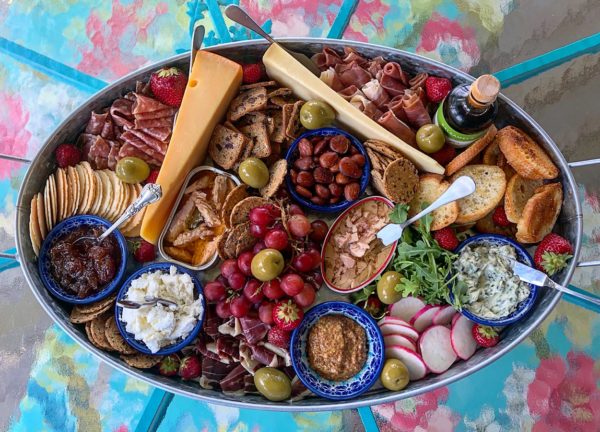
So you have all the foods selected…now what are you going to put them on? The sky is the limit! It can be as simple as a wood cutting board or the plate you serve your Thanksgiving turkey on. Cute, printed melamine platters are great for outdoor hangouts or use grandma’s divided crystal dish for dinner parties. For big gatherings, I love a huge tray with handles, which is often found as a coffee-table type item. Even shot glasses work for things like mustard or pesto. Get creative with what’s in your house!

For something new, head to your local thrift store. I have a lot of fun discovering old treasures and bringing them back to life. You’ll find everything from vintage ceramic to modern stoneware, as well as all kinds of oddball dishes to hold sauces. It doesn’t have to be matchy-matchy– add interest by selecting mismatched complementary pieces. Check the silverware bins for fun little serving spoons, two-tonged forks, and cheese knives.
For a fresh look, head to the home improvement store for a large marble tile to serve your spread on. Your local farmer’s market can also be a source for artisan crafted boards from vendors like From Tree to Home, based out of Ferndale.
The Art of Arranging
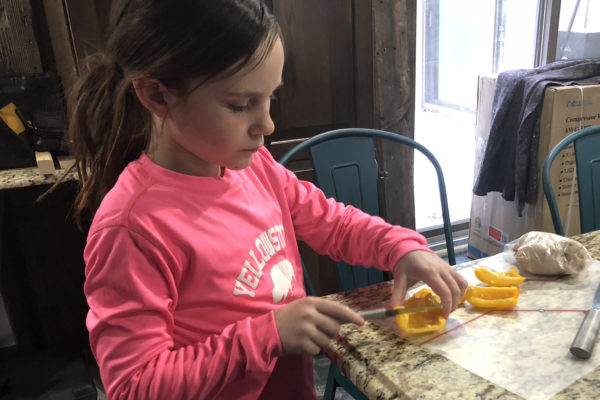
One of the reasons we love putting charcuterie boards together in our house is because it’s such an easy task for the kids to help with. Yes, you want it to look pretty, so this may not be a job for your toddler, but keep them in mind. My five-year old is a master salami roller, and my nine-year-old loves to wash and cut vegetables. I even let my older one do some of the arranging. Try making a diagram your older children can follow to help build the tray.
My general goal is to keep like items separated by contrasting items. Start by placing your sauce bowls and cups around the empty platter. Next consider items to pair together, and try to keep them close to one another. Pesto next to a hard cheese, a veggie, and a meat, maybe. Mustard next to meat and crackers. Use vegetables or crackers to create barriers between selections, being careful not to put your crackers next to anything that could make them soggy.

Many charcuterie meats are sliced very thin, so you want to arrange them in a way that ensures they won’t stick to the meat around them. Rolling into a tube works well for salami-type items, folding loosely before stacking works for others. Some meats, like prosciutto, can be a bear to do anything pretty with, so I’ve found small rosette-type piles to work well for that.
Cheese is an item you want to consider carefully. A lot of cheeses will dry up when left out as party platters normally are. It’s always prudent to leave a nice wedge of cheese whole with the appropriate knife next to it for the guests to slice. Sometimes, I will slice eight to ten pieces of each, leaving them next to the rest of the block with the knife, and I will pop through and cut more as they get eaten.
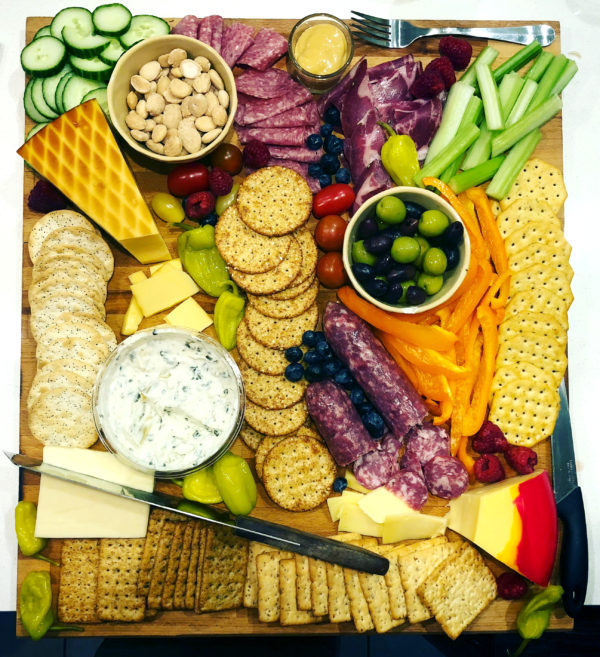
Don’t forget utensils and condiment dishes. Each cheese (if not cut) should have its own knife, and each sauce its own spoon or spreader. A fork next to meats is great, but toothpicks work, too. You want small dishes for each sauce, preferably not the container it came in unless it is a bottled item like balsamic glaze or oil.
Most importantly, keep it fun and don’t stress over it. A charcuterie arrangement can be pleasing to the eye with no trace of the plate showing between items; or, find artful arranging in piles spread across a board with lots of room. Consider “sprinkler” items such as grapes or cherry tomatoes to sprinkle across the board after it’s all prepared, a task any child could do. Make your own rules!
The Art of Finding the Perfect Store
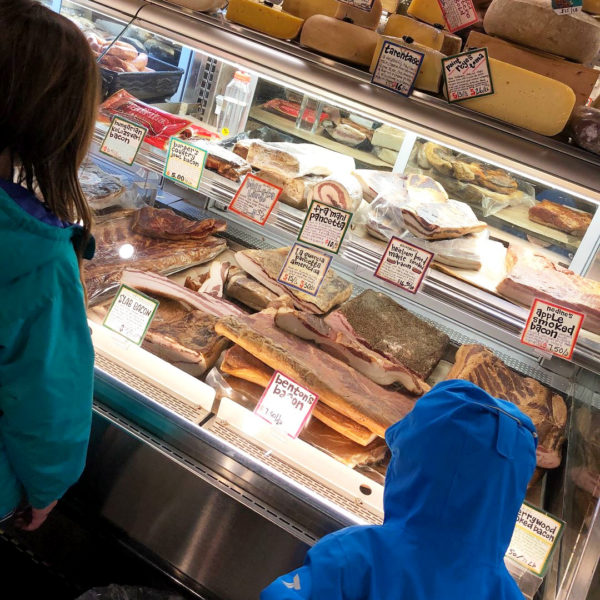
Part of the art form here is in the food itself. I’m a big believer in quality over quantity and I absolutely love to taste an artisan-crafted cheese or a meat that was cured in a small barn in Spain. The stories and origins of our food provide a culinary experience beyond what goes into our mouths. That’s part of what makes food so fun and intriguing and keeps us on the hunt.
Let’s face it though, building a charcuterie board can be expensive. Sometimes you are after a more budget-friendly option or you’re in a hurry and just want to run into the grocery store on the corner. Guess what? Even the big box grocery stores have everything you need. Head toward the deli counter and order up a half-pound of thin sliced genoa salami, and while you’re waiting, grab the pre-packaged prosciutto or a wedge of gouda from the cooler nearby. It totally works.
For the times when you want something special, there are so many wonderful options in the Detroit area. We here at Detroit Mom have put our heads together to come up with some of our favorite places to find quality meats, cheeses, and more. Stop in to one of these local businesses, and tell them Detroit Mom sent you!
Antonio’s Italian Market Sterling Heights
Cantoro Italian Market Livonia, Plymouth
The Cheese Lady Farmington, Rochester
Culture Beer & Cheese Brighton
Eastern Market Detroit
Holiday Market Birmingham, Royal Oak
Marrow Detroit
Monger’s Provisions Detroit, Ferndale
Nino Salvaggio Bloomfield Township, Clinton Township, St. Clair Shores, Troy
Papa Joe’s Market Birmingham, Rochester
Toasted Oak Market Novi
Ventimiglia Italian Foods Sterling Heights
Vince & Joe’s Clinton Township, Shelby Township
Zingerman’s Ann Arbor





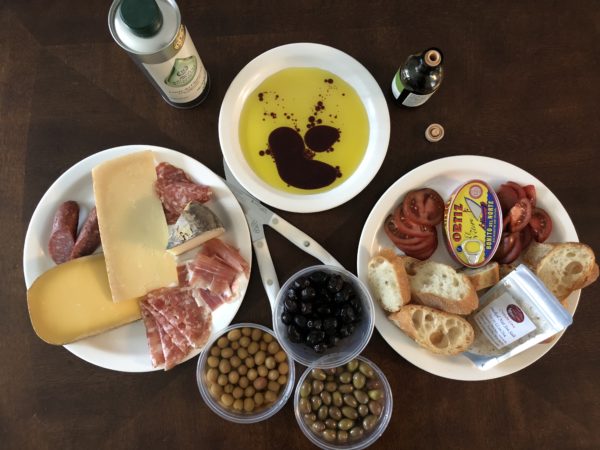
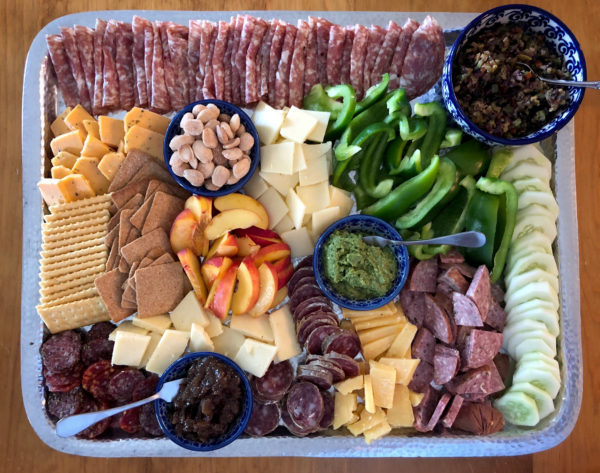
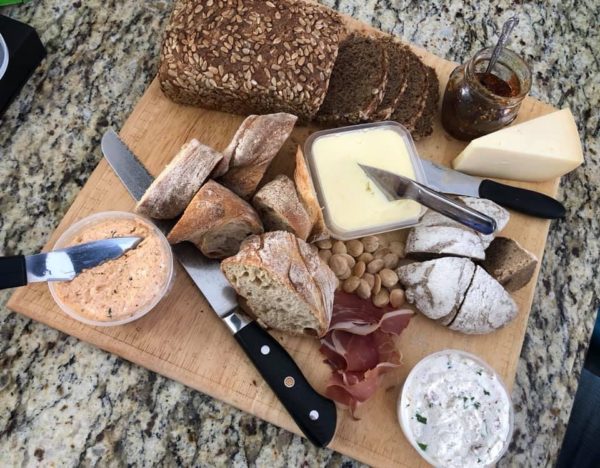
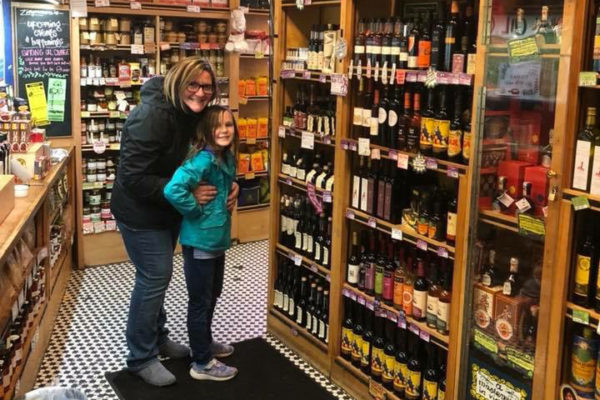


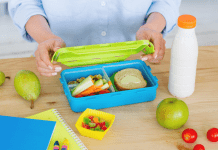





I have enjoyed many of Jessica’s charcuterie trays. Her advice is spot on, and you Detroit readers are fortunate to have so many shopping options available. I intend to charcuterie shop for my next tray when I’m in your area this weekend. Chow! (Trying to impress you with my Italian.)
Thanks, Mom! We should make a bucket list and try to hit all these places! Love ya!